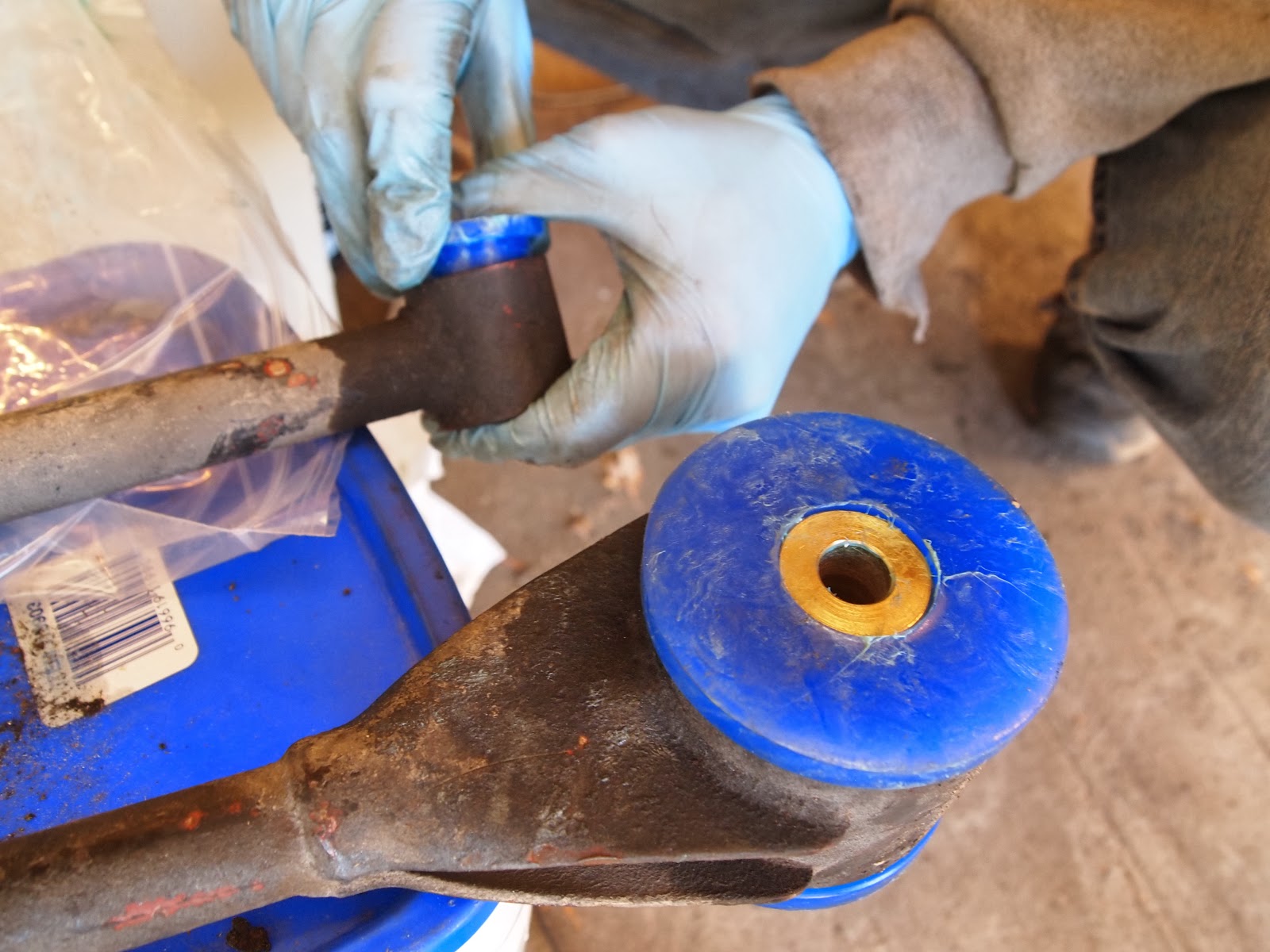Don't you wish your computer was beige like mine?
Step 1: Removal
Getting the links out was really not too terrible. A shot of PB-Blaster if needed, perhaps some gentle coaxing with the breaker bar. Other than that, smooth sailing with a couple of ratchets. Except, of course, for the damned metal shell on the old bushing. Extracting the bushing itself is smooth enough: put a small-ish bit on the drill and let it walk it's way around the bushing, slowly pulling it out a bit at a time and leaving a nice empty hole with the old shell still in place, and only a handful of broken drill bits in the process. Oh, but about that shell? It's a bitch. My best advice: Take it to somebody who knows better than I do. I ended up taking a hacksaw to each of mine, then pounding them out with a variety of hammers, punches, and flat bladed screwdrivers. It worked, but at a cost of one rubber mallet, one flat bladed screwdriver, and one punch. You know how they say to use the right tool for the job? Listen to them. They are smart.
Oh the humanity!
Step 2: Reinstallation:
Comparitively speaking, re-installation is trivial. Lube up the bushings, line them up roughly where they go, then beat them mercilessly with your new mallet (y'know, because you broke your old one...).
Shiny
Run the old bolts back through and torque em down. It's only rocket surgery in the sense that if you screw it up, a wheel or some other important piece will pop off while you cruise down the freeway. Also, since they're cheap, replace your axle limit straps.
Only the best fabric straps for our integral suspension components!!
Step 3: Upgrayedds!
You're going through all this work anyway, so why not make things better!? Anti-sway bars are used in most vehicles on the road today for that very purpose: reduced tendency to sway from side to side while cornering. How they work is quite simple. A big beefy bar is bolted to the frame and attached to some point on the moving suspension bits on both sides - typically (as in this case) the lower A-arms. When you corner, weight is concentrated on the outside of the car, compressing the outer spring. The anti-sway bar transfers some of this force to compressing the spring on the inner wheel, reducing the amount the car body rolls on its suspension simply by lifting up on the inner wheel.
I put in a new rear anti-sway bar to go with that fatty front bar. Installation of the rear bar is not quite as trivial as the front - which consisted of unbolting the old one, bolting the new one in the same spot, then wondering why you waited so long to open the box. These cars originally had no provision for a rear anti-sway bar and it seems most folks that upgrade the front don't bother with the rears. My research, which consisted of several exhaustive minutes on Google, led me to the conclusion that installing the beefier front bar without the rear would lead to a better anti-sway characteristics, but also more tendency to understeer at the limits. Adding the rear bar should* (*I am no expert, this could be made up) give the car a bit more neutral handling when pushed. At the very least, it should make the rear end easier to break loose if we want to, and let's face it, we want to.
I got the blues... Do you?
I'm under the assumption that most folks skip installing the rear bars not because of the handling traits, but because installation is a bit more involved. Rather than simply bolting in the existing location, the rear bar is clamped to the rear axle and the end-links are attached to new holes you just drilled under your backseat. The set-up is opposite in that the the endlinks are fixed to the frame, rather than to the moving suspension components, but the overall effect is the same - forces pushing down on one side of the car will be spread across both sides, reducing the amount of roll experienced by the chassis.
Doin' some surgery
Next, we'll turn up the heat!







No comments:
Post a Comment